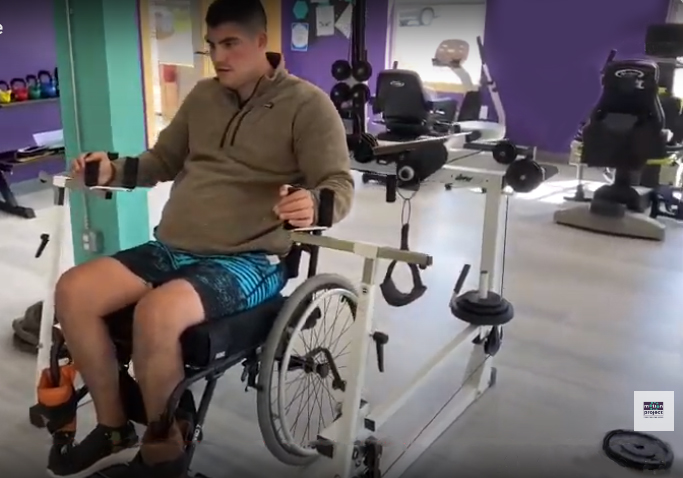Designed to move.
When we hear the word paralysis, we think of a lack of body movement. If the body is paralyzed, it is immobile and can’t move. And some may think that once a person is paralyzed, exercising and moving the body aren’t important. But our bodies were designed to move.
So why wouldn’t movement and exercise be the exact thing that somebody who is paralyzed need to do?
Society puts so much emphasis on the able-bodied community to eat right, exercise, and go to the doctor to maintain their overall health and wellness. Shouldn’t that be even more important for people with paralysis?
Rehab – Then What?
Typically, when a person is recovering from an injury that requires physical therapy, they spend a prescribed amount of time in rehab and then they are discharged.
But what happens when someone has had a severe injury, like a spinal cord injury (SCI)? They may need much longer — even lifelong — rehabilitation. And yet, SCI patients are often discharged from therapy before they are ready. Then what happens? They go home, stop moving and become sedentary.
Shortened Stays – Less Therapy
According to a 2022 data sheet published by the National Spinal Cord Injury Statistical Center (NSCISC), lengths of stay in the hospital acute care unit for those with SCI have declined from 24 days in the 1970s to 12 days since 2015. Rehabilitation lengths of stay have also declined since 2015, from 98 days in the 1970s to the current 32 days.
On top of that, the NSCISC reports that since 2015, about 30% of people with SCI were re-hospitalized one or more times during any given year following injury. Most of these re-hospitalizations were due to secondary complications resulting from lack of movement and a sedentary lifestyle. Our bodies are meant to move – whether we can move them ourselves or not!
NSCISC also notes that life expectancy for people with SCI has not improved since the 1980s. In fact, they remain significantly lower than people without SCI. Pulmonary and respiratory problems are an especially serious medical complication because they can lead to pneumonia; the number one cause of death among individuals with SCI.
Changing the Narrative
So how can we change this and start turning these numbers around? First, we need to change the narrative. Instead of thinking of rehabilitation, let’s think health and wellness. Rehabilitation is a process that has a beginning and end. Health and wellness is a pursuit that has no end.
Second, if insurance companies won’t provide longer rehabilitation or increase the length of hospital stays, then we need to offer programs and create spaces where people with disabilities can exercise after their rehab ends. We need more universally designed/accessible gyms and they should have inclusive fitness equipment.
Our Bodies Need to Move
Maintaining movement can help prevent the type of secondary complications so common for those with SCI.
I remember how healthy I was when I was able to get the intense exercise I needed after my injury. I felt great and was rarely re-hospitalized. However, when I moved back home, there was no place to go to get the exercise I needed. I became sedentary.
That lack of movement decreased my muscle tone and strength. I also experienced secondary complications like frequent urinary tract infections (UTIs), chronic pain, and depression. I was hospitalized multiple times and nearly died from pneumonia twice.
Eventually, I realized how all of this was preventable. I just needed to exercise and move my body. And I knew I wasn’t the only one who was experiencing this. That’s why I started my recovery center; to fill this gap in my community here in Western New York.
Starting a New Conversation
Exercise and movement provides many benefits for people with paralysis. It improves mood, increases physical function, supports independence and so much more. And, most importantly, exercise and movement contribute to a healthier, better quality of life.
I hope that in reading this it will motivate you to find a way to exercise and move your body. It doesn’t matter if you have an exercise specialist. A caregiver, a family member, or a friend can help…let them help you. Let’s start a new conversation and start talking about health and wellness instead of just rehab. Moving should be lifelong, and not have a beginning and an end. Together we can move!

